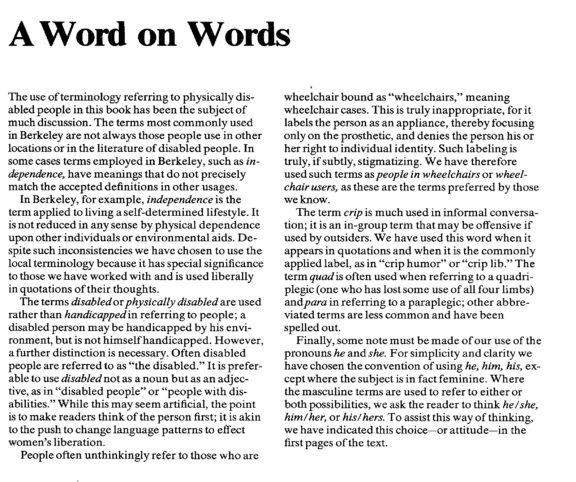This page, from Ray Lifchez and Barbara Winslow’s landmark Design for Independent Living, captures the ethos of Berkeley’s crip revolution and explains the logic behind using some terminology over others.
Lifchez and Winslow suggest that there was a way of being “crip” that was wholly unique to the disability rights movement in Berkeley. In Berkeley, people in wheelchairs were not to be seen as supplicants appealing for services or patients requiring medical attention, but as individuals living full, self-determined lives. This came during a time when disability rights advocates were resisting terms like “handicapped” and “functional limitation” to describe their circumstance. Borrowing from the logic of previous identity movements, phrases like “the disabled” were to be avoided because they denied people with disabilities their personhood.
“Crip” became a way to identify within an anti-assimilationist subculture that was fed up with rehabilitative models of disability that asked those with disabilities to conform to the model of the able-bodied. Instead, a push towards accommodation began to materialize in Berkeley. The movement put the needs and desires of people with disabilities in the front and center of decision-making related to housing, transportation, employment, and other services. The independent living movement put forth the radical idea that people with disabilities should be involved in creating services for themselves. They were no longer to be considered patients.
In the process, as Lifchez and Winslow note, the very meaning of “independence”—a term enshrined in America’s founding document—was also given new meaning.
Not every person with a disability during this time identified as “crip”. Some students entering the Cowell Hospital program did not readily adopt the term, or felt uncomfortable with politically reclaiming the historically pejorative term “cripple”. However, its entry into the vernacular of disability advocates was significant, demonstrating how people with disabilities came to a new sense of self-conception and, along with their allies, recognized the unique features of the crip revolution.
